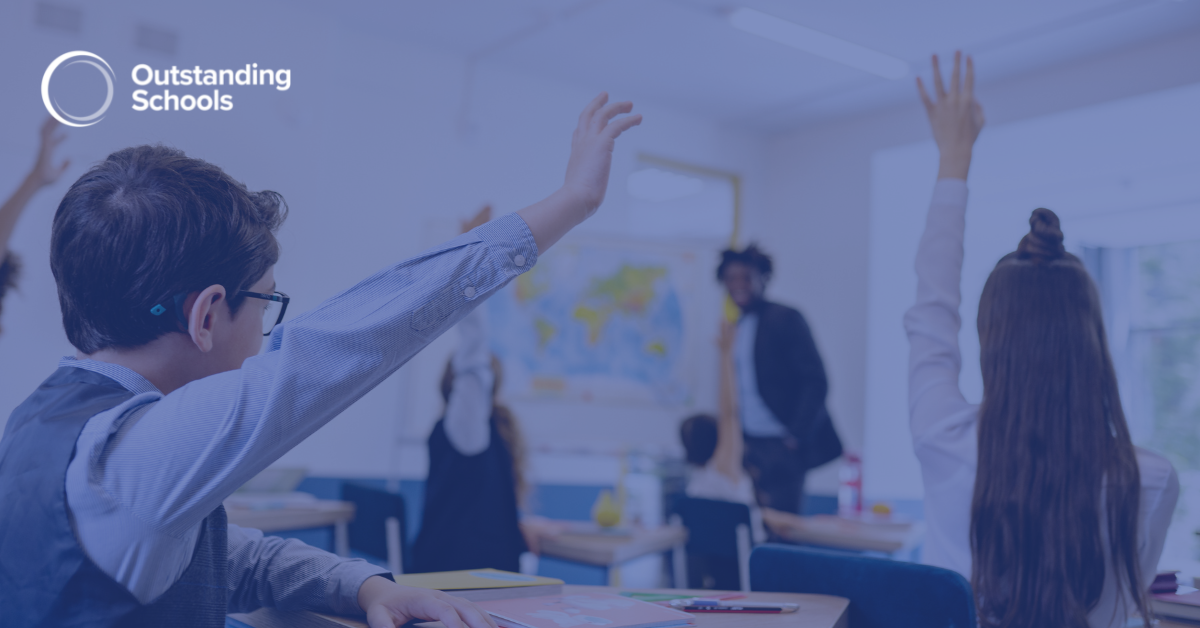The Future of Education Lies in Simple Building Blocks and Vending Machines | Jack George
When Satoshi Nakamoto mined the first Bitcoin in 2009, they had no idea that this had the power to inspire a reimagining of every industry on the planet. Education is certainly late to the party but could be the most honoured guest by far.
An Industry ‘Behind the Curve’
Teachers being reduced to ‘reinventers of the wheel’ and the industry as a whole being ‘behind the curve’ are terms that are all too often associated with a delicate craft that demands unfathomable amounts of creativity, emotional awareness and willingness to adapt. It is this contradiction that has confused many a PGCE student as they are taught to innovate in places where TikTok likes are already the primary currency of the main stakeholders. In order to solve this conundrum, however, could we suggest that the wheel is in fact the wrong shape and that we are using the wrong curve as a yardstick?
The idea of a teacher being a classroom facilitator of discovery rather than a regurgitator of information is certainly nothing new and this has been proven to increase the likelihood of producing reflective, lifelong learners who revel in the chance to independently investigate an array of content. However, if students own their learning, then shouldn’t every other element of their academic journey should belong to them also? A student’s time in secondary school consists of the experiences encountered that allow them to grow, whether it be volunteering at a local shelter or sitting an examination in History. Unsurprisingly, it is this notion that is lost with current reporting and assessment systems. There is, however, the possibility for even public examination systems to intertwine with holistic education, reflection and reporting but, in order to do this, we must throw away the wheel that has apparently been reinvented so many times and replace it with a simple block.
Tech companies have certainly paid far more attention to the Education sector over the last ten years but, until now, they have failed to avoid a crucial stumbling block. They have wrongly assumed that the data produced and stories documented belong to them rather than the students themselves and this has caused them to blindly create closed ecosystems that struggle to dynamically amalgamate with others. To some extent, exam boards also unintentionally contribute to this problem in that their standalone certificates can often be incompatible with those wanting to paint a more detailed picture of a student’s journey. This system has clunked along relatively successfully until now, but, if we are going to empower our students to be the authors of their own narrative both in school and when reporting back to parents, we must look for a radical but incredibly simple solution. The answer is Blockchain.
Ownership of Stories
The philosophy of Blockchain allows students’ ownership of their own data in a wallet that can be accessible by teachers but managed only by themselves. But what to put in that wallet? To start you could think small and say exam grades or certificates. Think slightly bigger, however, and you could suggest the recording of experiences and achievements measured against a school’s guiding principles. Let’s pause here, however, and question how these experiences could be uploaded, managed and delivered to stakeholders.
If a twelve year old can carefully manage a social media account and engage thousands of followers with a single post, what is to say that they can’t manage, showcase and direct their own academic journey throughout secondary school? What’s to say they cannot manage NFTs as they would certificates and post these to an Instagram style story alongside videos and reflections of the Duke of Edinburgh trip that they completed last week? The ownership of this documentation would fall to them and them alone and could even bridge the gargantuan void of information that currently exists between secondary and tertiary education.
If each student possessed a Blockchain based wallet dedicated to their academic journey alone then the walls between each closed ecosystem designed to benefit learning would quickly crumble. This would then make way for a linear, logical and coherent story to be accessible by all necessary stakeholders, regardless of institution or system adopted. A shift towards students’ ownership of journeys and data would in turn allow more seamless migration from school to school in the same vein as when teachers vet job candidates’ Facebook pages to see what they’re all about prior to interview. Let’s then think even bigger again and consider reinventing the C.V., where recruiters and establishments of further education can see how students performed against their schools’ guiding principles and therefore how they responded to challenge and, in turn, grew. All this is possible thanks to Blockchain and the ultimate decision as to whether to share this information would of course be down to the student.
Smart Exams
Examination boards across the world are already experimenting with digital public exams but, so as to avoid being yet another step behind other rapidly advancing industries, we can challenge them to think far bigger. What if examinations existed on the Blockchain and, depending upon conditions met, NFTs were released in the place of grades? These could still be based on the dated concept of 1-9 or A*-C but, instead of a certificate being produced, a completely individual and uncopyable NFT could be issued to each student’s wallet. This would allow a permanent record of performance to be sent directly to the student themselves and therefore form an integral but additional part of their story when compared to the thousands of other, more holistic achievements that they reached along the way. In order to achieve this, however, we need a mechanism that allows governance of grade issuance in escrow.
In his outlook changing book, Proof of Stake: The Making of Ethereum and the Philosophy of Blockchains, Viltalik Buterin likens a Smart Contract to that of a vending machine in that, if certain conditions are met (i.e., the correct change introduced and a certain code entered), your favourite packet of crisps is released into the bucket of sustenance. The same concept could be applied quite easily to public examinations in that, if a certain percentage is obtained or competency demonstrated, a node could issue an NFT grade that immediately appears in a student’s wallet, allowing them to pin this to the top of their story should they choose to do so. A certificate can easily be faked but, with a transparent policy in place as to its minting, an NFT grade cannot. The primary advantages here are ownership and security in that Blockchains exist beyond any organisation and these grades can therefore intertwine with students’ digital and professional identities for their entire lives.
Conclusion
In short, we now possess the technology to fully empower students as masters of their educational journeys in every aspect of traditional schooling. It is time that we as teachers advance beyond the curve and become the facilitators and guides that Web3 will one day allow every professional to be.
-Apr-04-2023-08-54-07-1940-AM.png)
This article was written by Jack George, the Assistant Head (Discovery) at Aiglon College, Switzerland. Stay in touch with Jack on Twitter @jcgedu.



